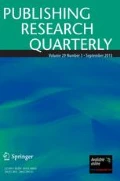Although Hans Folz has been recognized as a major late medieval German poet and printer of his own works for some time now, Caroline Huey’s monograph might well be the first one in English to discuss this Nuremberg barber–surgeon, poet and printer. In six chapters she examines Folz’s works and a variety of themes, first reflecting on him as a person, on his specific position in late-medieval Nuremberg, and on the interest that he has found in modern research. Unfortunately, there is no biographical sketch here, although we know more or less his exact life dates (1435/40-1513), and the reader is also left in the dark as to where to turn for a modern edition of Folz’s numerous works. As Huey emphasizes, for Folz, very similar to many of his contemporaries, his world was determined by the plague, evil wives, dangerous Jews, and despotic clerics (5). He resorted in an extraordinary fashion to the new print medium by publishing and disseminating his own works, which Huey studies at length both in the first chapter and in the next chapter. She also outlines Folz’s outspoken anti-Jewishness, his great interest to contribute to the culture of the carnival, and to use his poetry for medical advice, since he worked as a barber–surgeon.
Huey had the great opportunity to autopsy many if not most of the Folz prints in German libraries and could thus examine them very meticulously, bringing to our attention the significant communication between text and image, although she does not engage with the most current research on this topic. There is no doubt at all that Folz pursued strongly didactic goals and wanted to “help people” (31), but that is what every didactic writer has done throughout times. What would have been the specific approach by this poet, then? Apart from general comments here and there, Huey strangely at first neglects to answer this question, although this would have been the critical concern justifying the entire project to bring Folz back to the modern awareness. In the third chapter she makes an attempt to illustrate how much the poet was dedicated to teaching his audience about the great need to coordinate body and mind in order to achieve happiness and health. Huey also underscores Folz’s great admiration of the Virgin Mary and his belief in her immaculate conception. I would have liked to see more critical discussions of what this all means in terms of Folz’s individual contributions and his position in late-medieval Nuremberg. Overall, the mental-historical framework is not sufficiently illustrated, and the interpretations of the individual songs or verses remain on a rather superficial level.
In chapter four, Huey turns to Folz’s misogynist attitude toward women, especially the evil wife who is often described as violent and aggressive against the weak and defeated husband. In chapter five, the author discusses Folz’s well-known and rather disgusting anti-Jewishness, but she does not necessarily unearth new information and does not shed new light on Folz’s work. Chapter six analyzes how Folz utilized printed broadsheets to disseminate popular concepts about medicine and the human body, which were all deeply determined by a Christian approach. Huey concludes with the summary observation that “Folz’s oeuvre is a diagram for the human individual’s role in life, through death” (97), which says everything and not much, really.
The most valuable aspects of Huey’s rather slim volume are the reproductions of a large number of Folz’s prints and a comprehensive list of Folz’s prints before 1501 and after 1501. The chronological divide is not quite clear to me, unless Huey intended to respond to our common practice to separate the prints before (incunabula) and after the turn of the century (early modern prints).
The volume concludes with a bibliography of the secondary sources (labeled thusly!), although she should have separated the primary editions from the critical studies. At least the edition of Folz’s texts (e.g., ed. by Hanns Fischer, 1961, and by A. Mayer, 1908, now also available in a reprint from 1970) should have appeared in a different list of titles. A number of critical studies of Folz’s works are not included in the bibliography (e.g., Elisabeth Keller, Die Darstellung der Frau, 1994; Jacob Klingner, Minnereden im Druck, 2010). The volume concludes with an index. Altogether, this is a welcome introduction to Hans Folz in English, but it remains rather on the surface and does not fully do justice to this poet and his time.
Author information
Authors and Affiliations
Corresponding author
Rights and permissions
About this article
Cite this article
Classen, A. Caroline Huey: Hans Folz and Print Culture in Late Medieval Germany: The Creation of Popular Discourse. Pub Res Q 28, 371–372 (2012). https://doi.org/10.1007/s12109-012-9289-9
Published:
Issue Date:
DOI: https://doi.org/10.1007/s12109-012-9289-9

